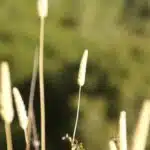Radishes are a popular crop for gardeners due to their quick growing time and versatility in the kitchen. However, despite their ease of cultivation, there are several common problems that can arise when growing radishes. In this article, we will explore four of the most frequent issues faced by gardeners and provide solutions to ensure a successful harvest.
One of the primary problems when growing radishes is poor germination rates. Radish seeds require specific conditions to sprout, including consistent moisture and cool temperatures. If these criteria are not met, seeds may fail to germinate or take longer than anticipated. Another issue is bolting, which occurs when plants prematurely flower and produce seed stalks rather than forming edible roots. This can be caused by various factors such as high temperatures or inadequate spacing between plants. By identifying these and other common issues with growing radishes, gardeners can take steps to improve their success rate and yield a bounty of delicious radishes for themselves or others.
Poor Germination Rates
Radishes are a popular crop among gardeners due to their quick growth and ability to thrive in various soil types. However, one common issue that gardeners face is poor germination rates. This problem can be attributed to several factors, including improper seed selection and inadequate temperature requirements.
When selecting radish seeds, it is crucial to choose high-quality seeds that are less likely to have low germination rates. Gardeners should check for information on the seed packet about the percentage of germination success and purchase seeds from reputable sources. Additionally, using older or improperly stored seeds can result in lower germination rates.
Temperature requirements also play a significant role in radish seed germination. Radishes prefer cool temperatures between 45-75°F (7-24°C) and can struggle with germination if the temperatures exceed this range. It is recommended to plant radish seeds during the cooler months of spring or fall when temperatures are more favorable for successful germination.
Inadequate seed selection and temperature requirements are two essential factors that contribute to poor radish germination rates. By carefully selecting high-quality seeds and planting them during suitable temperature ranges, gardeners can increase their chances of successful radish growth. Inconsistent moisture levels can also impact radish growth, which will be discussed in the following section.
Inconsistent Moisture Levels
Maintaining consistent moisture levels is crucial to growing healthy radishes. Inconsistent watering can lead to problems such as splitting, bolting, and uneven growth. To ensure that your radishes receive the right amount of water, it is essential to follow these tips for consistent moisture:
Water deeply and infrequently: Instead of frequent light watering, which can lead to shallow roots and inconsistent moisture levels, water deeply once a week or every five days.
Mulch: A layer of mulch around your radish plants can help retain soil moisture and prevent evaporation.
Monitor soil moisture: Use a moisture meter or stick your finger into the soil to check for dryness before watering. The soil should be moist but not waterlogged.
Time your watering: Water in the early morning or late afternoon when temperatures are cooler to minimize evaporation and ensure that the plants have enough time to absorb the water before any excess evaporates.
Dealing with drought can be challenging, but there are several ways to help your radishes survive without adequate water:
Shade: Providing shade with a cloth or mesh cover can reduce evaporation and lower temperatures around the plants.
Water retention products: These products can help retain soil moisture by absorbing and slowly releasing water over time.
Drought-tolerant varieties: Some varieties of radishes are more tolerant of dry conditions than others; consider choosing one of these if you live in an area prone to drought.
Harvest early: If the drought persists and your radishes are not maturing properly, consider harvesting them early rather than letting them go to waste.
Maintaining consistent moisture levels is critical for growing healthy radishes, but unsuitable soil conditions can also cause problems. In the next section, we will discuss how you can deal with these issues to ensure optimal growth for your radish crop.
Unsuitable Soil Conditions
Soil preparation is crucial in determining the success of radish growth. Unsuitable soil conditions can cause stunted growth, poor yields, and even death of the plant. Radishes prefer well-draining, loose soils that are rich in organic matter. A soil with high clay content can retain too much moisture and lead to root rot, while sandy soils drain too quickly and may not hold enough water to support the plant’s needs.
The pH level of the soil also plays an important role in radish growth. The ideal pH range for growing radishes is between 6.0 and 7.0. If the soil is too acidic or alkaline, it can affect the availability of nutrients to the plant, hindering its ability to grow properly. Soil testing kits are available at garden centers and online retailers to help determine soil pH levels.
Table: Effects of incorrect Soil Conditions on Radish Growth
| Soil Condition | Effect on Radish Growth |
|---|---|
| High Clay Content | Retention of too much moisture leading to root rot |
| Sandy Soils | Drainage issues due to quick drainage |
| Too Acidic or Alkaline Soil | Affects nutrient availability |
Incorporating organic matter into the soil before planting can improve its structure and nutrient content, promoting healthy radish growth. Adding compost or well-rotted manure will improve drainage in heavy soils while increasing water retention in sandy soils. Additionally, amending the soil with lime or sulfur can adjust pH levels if they are outside of the ideal range.
Addressing unsuitable soil conditions is a critical step in ensuring successful radish growth. Proper soil preparation and management will create an environment where radishes thrive and produce optimal yields. With suitable growing conditions established, attention should be given to other factors such as planting depth to ensure a bountiful harvest.
Transition: While addressing unsuitable soil conditions is key to radish growth, it’s equally important to plant the seeds at the correct depth.
Incorrect Planting Depth
The success of growing radishes relies heavily on proper planting techniques. One common mistake is incorrect seed depth, which can lead to stunted growth or no growth at all. The depth at which the seeds should be planted depends on the size of the seed itself.
For larger radish seeds, they should be planted about half an inch deep into the soil. Smaller seeds require a shallower depth of only a quarter inch. It’s important to ensure that the soil is well-draining and moist before planting to encourage germination.
If you find yourself struggling with correct seed depth, there are a few tricks you can use to help you out. One method is to use your finger or a small stick to create a depression in the soil before placing your seeds inside. This will give you a better idea of how deep each individual seed should be planted. Remember to also check the recommended seed depth on the packaging before planting for best results.
Moving forward, it’s important not to overlook small details such as seed depth when planting radishes. By taking care during this step, you set your plants up for success and reduce the risk of pest and disease infestations in later stages of growth. Speaking of which, let’s take a closer look at some common pests and diseases that can affect your radish crop.
Pest And Disease Infestations
Radishes are generally hardy plants that can thrive in many growing conditions. However, they are still susceptible to various pests and diseases that can cause significant damage to the crop. Some of the most common pest infestations include flea beetles, root maggots, aphids, and cutworms. Meanwhile, some of the most prevalent diseases affecting this plant include damping-off, clubroot, and blackleg.
Preventive measures are essential in reducing the risks of pest and disease infestations in radishes. One effective strategy is to avoid planting radishes too close to other members of the brassica family such as cauliflower or broccoli as they attract similar pests and diseases. It’s also best to practice crop rotation by planting radishes in a different location each year to reduce soil-borne pathogens.
Organic remedies offer an alternative solution for controlling pests and diseases without using synthetic pesticides. For example, introducing beneficial insects like ladybugs or lacewings can help control aphid populations. Additionally, companion planting with herbs such as mint or chamomile can help deter pests naturally. For fungal diseases like clubroot, applying a mixture of compost tea infused with garlic can aid in suppressing the spread of spores.
Insufficient nutrient levels can also hinder proper growth and increase susceptibility to pests and diseases. Understanding how to balance soil pH levels and providing adequate fertilizer can help prevent these issues. In the next section, we will discuss strategies for ensuring optimal nutrient levels in your radish crop.
Insufficient Nutrient Levels
Radishes require a balanced supply of macronutrients and micronutrients to grow optimally. Inadequate nutrient levels can result in stunted growth, reduced yield, and poor quality produce. Nutrient deficiencies can occur due to various reasons such as poor soil conditions, lack of fertilization, or improper watering practices.
Fertilizer application is crucial for providing nutrients to radishes. Nitrogen, phosphorus, and potassium are the main macronutrients that are required in adequate amounts for proper radish growth. The best time to apply fertilizer is before planting or during the early stages of growth. Over-fertilization should be avoided as it can cause excessive foliage growth at the expense of root development.
Nutrient deficiency symptoms can vary depending on the specific nutrient lacking in the soil. For instance, yellowing leaves may indicate nitrogen deficiency while purple or reddish leaves may suggest phosphorus deficiency. Micronutrient deficiencies such as iron or magnesium can also cause discoloration or stunted growth in radishes. A soil test can help identify specific nutrient deficiencies and guide appropriate fertilizer application.
Insufficient nutrient levels is a common problem faced by growers of radishes. Proper fertilizer application is essential for supplying essential macronutrients and micronutrients to prevent nutrient deficiencies from occurring. In the next section, we will discuss another issue that can arise due to overcrowding and lack of spacing between plants.
Overcrowding And Lack Of Spacing
Despite their small size, radishes require a lot of space to grow properly. Overcrowding is a common problem that many gardeners face when growing radishes. This can happen if too many seeds are planted in one spot, or if the plants are not spaced out enough.
When radishes are overcrowded, they do not have enough room to develop properly. This can result in stunted growth and misshapen roots. In severe cases, the plants may even begin to compete with each other for nutrients, which can lead to disease and pest problems. To avoid overcrowding, it is important to follow proper spacing guidelines when planting radishes. Companion planting and container gardening are also effective ways to maximize space while still allowing your radishes to thrive.
Companion planting involves pairing different types of plants together based on their complementary properties. For example, planting radishes alongside carrots can help deter pests and improve soil quality. Container gardening is another option for those with limited space or poor soil quality. By growing your radishes in containers, you can control the amount of space they have and ensure that they receive the proper amount of water and nutrients. With these strategies in mind, you can help prevent overcrowding and create a healthy environment for your radishes to grow.
Moving forward, it is important to keep in mind the potential consequences of overcrowding when growing radishes. While it may seem like an easy way to save space or time, it ultimately leads to suboptimal growth conditions for these delicate plants. In our next section, we will explore another common issue that gardeners face: bolting and premature flowering.
Bolting And Premature Flowering
Bolting and premature flowering are common problems that can arise when growing radishes. Bolting is the process of a plant producing a flower stalk prematurely before it has fully matured, which affects the quality of the radish root. Premature flowering, on the other hand, refers to the early onset of blooming before full maturity, which can also affect the yield.
There are several factors that contribute to bolting and premature flowering in radishes. One of these is environmental conditions such as high temperatures or prolonged exposure to sunlight. Additionally, planting radishes in soil that is too warm or dry can also lead to early blooming. In some cases, genetics may also play a role in determining whether or not a radish plant will bolt.
Preventing bolting and delaying flowering in radishes requires careful management of environmental conditions and proper cultivation methods. Some strategies for preventing bolting include planting radishes during cooler seasons or providing shade for plants during periods of excessive heat. Additionally, ensuring that soil moisture levels are optimal and avoiding over-fertilization can help delay flowering.
To further prevent bolting and delay flowering in radishes, consider implementing these tips:
- Plant seeds at recommended depths based on specific cultivars
- Space plants adequately to provide proper air circulation
- Avoid disturbing roots during transplanting
- Provide consistent watering throughout growing season
- Use row covers or shade cloth to protect plants from intense sunlight
Next, we will explore how excessive heat and sun exposure can impact the growth and development of radishes.
Excessive Heat And Sun Exposure
Radish burning is a common issue faced by horticulturalists when growing radishes. Radishes may become sunburned if they are not adequately shaded or watered during periods of excessive heat. Sunburned radishes often display symptoms such as wilting leaves and discolored or split roots. Radish burning can be prevented through proper soil preparation and maintenance of adequate soil moisture levels.
Radish Burning
The excessive heat and sun exposure can cause several problems for radish growth, including radish burning. This issue occurs when the sun’s intensity is too high, causing the leaves of the plant to turn yellow or brown and eventually die. Radish burning can also affect the flavor of the radish, making it bitter and unpleasant to eat.
To prevent radish burning, it is essential to provide shade for the plants. You can use a shade cloth or plant them in an area where they will receive partial shade throughout the day. Another option is to water your radishes more frequently during hot weather to help cool down their root systems.
If you have already experienced radish burning, don’t worry; there are still ways to salvage your harvest. Try trimming off any damaged leaves and harvesting your radishes earlier than usual. You can also try incorporating cooked radishes into recipes that require a milder flavor, such as roasted vegetables or soups. With these adjustments, you can still enjoy the benefits of growing your own fresh radishes despite facing challenges like excessive heat and sun exposure.
Sunburned Radishes
Excessive heat and sun exposure can cause several problems for radish growth, including radish burning. However, it is not the only issue that may arise due to intense sunlight. Sunburned radishes are another concern that gardeners should be aware of when growing this root vegetable.
Sunburned radishes occur when the top part of the root is exposed to direct sunlight for a prolonged period. This exposure causes the skin to turn white or yellow, making them unappetizing and unsightly. To prevent sunburned radishes, it’s crucial to protect them from direct sunlight by mulching around the base of each plant or planting them in an area with partial shade.
If you happen to encounter sunburned radishes in your garden, there are still ways to salvage them. The first step would be to harvest them early before they become more damaged. Once harvested, cut off any damaged areas and store the remaining good roots in a cool place until ready for use. You can also try incorporating these sunburned radishes into recipes that require cooking, such as stir-fries or stews, where appearance is less critical than taste.
In conclusion, excessive heat and sun exposure can cause several issues for radish growth. Radish burning and sunburned radishes are two common problems that gardeners face when growing this root vegetable under intense sunlight. However, with proper sun protection techniques and harvesting methods in place, you can still enjoy a bountiful harvest of fresh and tasty radishes all season long.
Inadequate Watering And Irrigation
Excessive heat and sun exposure can be detrimental to radish growth, as discussed in the previous section. However, inadequate watering and irrigation can also lead to stunted or failed crops. Radishes are drought-resistant plants, but they still require consistent moisture for optimal growth. Without proper hydration, radishes may become bitter or woody.
To ensure adequate watering, it is important to establish a reliable irrigation system. Drip irrigation is an efficient method that delivers water directly to the base of the plant, minimizing waste and reducing the likelihood of disease. Overhead sprinklers should be avoided as they can increase humidity levels which in turn promotes fungal growth.
Failure to properly thin seedlings is another common problem that can lead to inadequate watering and irrigation. When too many seeds are planted in one area, there will not be enough space for each plant to receive adequate moisture and nutrients. As a result, some plants may struggle while others thrive, leading to an uneven crop yield. To avoid this issue, it is important to thin seedlings when they have grown their first true leaves, leaving only the strongest individuals spaced several inches apart.
In summary, while radishes are known for their drought resistance capabilities, they still require consistent moisture for optimal growth. Establishing a reliable irrigation system such as drip irrigation is crucial in ensuring adequate hydration without promoting fungal growth. Additionally, failure to thin seedlings can lead to an uneven crop yield by impeding adequate watering and nutrient absorption.
Failure To Thin Seedlings
When radish seedlings are not thinned, they can become overcrowded and stunted. This is a common problem for novice gardeners who may not realize the importance of thinning. Thinning benefits the remaining seedlings by providing them enough space, nutrients, and light to grow into healthy mature plants.
There are alternatives to thinning that can be considered. One option is to plant seeds farther apart initially, which will reduce the need for thinning later. Another approach is to cut off the top of each extra seedling at soil level with scissors or shears rather than pulling it out. This method is known as “snipping” or “scissoring” and minimizes disturbance to the remaining seedlings.
However, it’s essential to remember that thinning remains an essential task for successful radish cultivation. It’s better to remove excess seedlings before they grow too large and compete for resources. Thinning helps prevent problems such as root deformities, yellowing leaves, and reduced yield caused by overcrowding. By taking the time to thin your radishes properly, you’ll end up with healthier plants and a more bountiful harvest.
Moving on from failure to thin seedlings, another challenge faced by radish growers is damage from wildlife and other animals.
Damage From Wildlife And Other Animals
As much as gardeners adore wildlife, its presence poses a significant threat to radish crops. Wildlife such as rabbits, deer, and rodents are notorious for their appetites for fresh vegetables, including radishes. These animals can quickly devour an entire crop before the gardener even realizes what has happened. Moreover, they tend to target young seedlings and tender leaves of mature plants.
Wildlife control is vital if you want to protect your radish crop from damage. While it may be tempting to take drastic measures such as killing or trapping animals, prevention measures are more humane and effective. One way of controlling wildlife is by installing physical barriers around the garden or using repellents that make the area less attractive to animals. Another approach is planting companion crops like onions and garlic that deter pests with their strong aroma.
Ultimately, prevention is better than cure when it comes to protecting your radishes from wildlife damage. By taking proactive measures like those outlined above, gardeners can minimize losses and ensure they have a bountiful harvest at the end of the season.
Numeric List
To deter wildlife from damaging your radish crop, consider implementing these three prevention measures:
- Install physical barriers around the garden such as fences or netting to keep out animals.
- Use repellents that make the area less attractive to wildlife.
- Plant companion crops like onions and garlic that have a strong aroma which deters pests.
As you implement these steps, remember that prevention is key in keeping your radish crop safe from harm by wildlife.
Improper Harvesting Techniques
Harvesting radishes is a crucial step in maximizing their nutritional value and flavor. Improper harvesting techniques can lead to stunted growth, decreased yield, and reduced quality. To ensure a successful harvest, it’s essential to follow some basic harvesting tips.
Firstly, it’s important to wait until the radishes have reached maturity before harvesting them. Mature radishes will be firm, crisp, and evenly colored. Pulling them out of the ground before they’re ready can result in small or underdeveloped roots. Secondly, to avoid damage to the plant and soil disturbance, use a garden fork or trowel instead of pulling the plant out by its leaves or stem. Lastly, after you’ve harvested your radishes, remove any excess soil from the roots and cut off any leaves close to the root as soon as possible.
After harvesting your radishes successfully, storing them properly is essential to keep their freshness intact. Radishes should be stored unwashed in an airtight container in the refrigerator’s crisper drawer for up to one week. If you want them to last longer than that, consider blanching them quickly and then freezing them for later use in salads or soups.
In summary, proper harvesting techniques help maximize yield while preserving nutritional value and flavor. Storing your radishes correctly helps maintain their freshness for an extended period. The next section will discuss storage and preservation issues that arise when attempting to store harvested radishes over extended periods.
Storage And Preservation Issues
Maintaining the correct temperature when storing radishes is particularly important for ensuring their longevity. Radishes should be stored between 34 and 38 degrees Fahrenheit, with the optimal temperature being 36 degrees Fahrenheit. Preservation techniques such as blanching and freezing can be used to extend the shelf life of radishes. Additionally, drying and pickling are also useful methods to preserve radishes for longer periods of time.
Storage Temperature
When it comes to growing radishes, there are a few common problems that gardeners must tackle. One of the most important issues is storage and preservation. Proper storage temperature is essential in avoiding spoilage and ensuring that your radishes stay fresh for as long as possible.
To maintain the ideal storage temperature for radishes, they must be kept at around 32-40°F (0-4°C). Higher temperatures can cause them to wilt and soften, while lower temperatures can lead to freezing and loss of quality. It’s best to store radishes in a cool, dark place such as a root cellar or refrigerator. If you don’t have access to these options, you can also use a plastic bag with holes punched into it to allow for air circulation.
When it comes to avoiding spoilage, it’s also important to keep your radishes dry. Excess moisture can cause them to rot quickly. Before storing them, remove any excess dirt or leaves and let them air dry for a few hours. Once they’re completely dry, wrap them in paper towels or cloth before placing them in an airtight container or plastic bag. By following these tips for ideal storage and avoiding spoilage, you can enjoy your fresh radishes for longer periods of time without wasting any!
Preservation Techniques
When it comes to storing and preserving radishes, ensuring that they stay fresh for as long as possible is essential. However, proper storage is not the only solution. Preservation techniques can also be used to extend the shelf life of radishes. One effective method is vacuum sealing. This technique removes all air from the packaging, preventing oxidation and microbial growth that can cause spoilage. Vacuum-sealed radishes can last up to four weeks in the refrigerator or freezer.
Another popular preservation method for radishes is pickling. Pickling involves soaking the radishes in a mixture of vinegar, salt, sugar, and spices. The acidic properties of vinegar inhibit bacterial growth and help to preserve the radishes’ texture and flavor. Pickled radishes can be stored for several months in a cool, dry place or in the refrigerator. They make a great addition to salads, sandwiches, tacos, and other dishes.
In conclusion, proper storage temperature is crucial in keeping fresh radishes from spoiling quickly. However, preservation techniques such as vacuum sealing and pickling can also be used to extend their shelf life even further. By utilizing these methods, you can enjoy your radishes for longer periods without wasting any while also exploring new culinary possibilities with pickled varieties!
Common Varieties And Their Characteristics
As the saying goes, “variety is the spice of life,” and that holds true for radishes as well. There are many top radish varieties to choose from, each with its unique characteristics that make it a favorite among growers and food enthusiasts alike.
One popular variety is the Cherry Belle, known for its bright red skin and crisp texture. Its flavor profile is mildly sweet and slightly spicy, making it an excellent addition to salads or as a garnish for sandwiches. For those looking for a more pungent taste, the Black Spanish Radish may be the way to go. This variety has a black skin and white flesh with a strong peppery flavor that pairs well with roasted meats.
When growing different varieties of radishes, it’s important to consider their specific needs. For example, some varieties prefer cooler temperatures while others can thrive in warmer climates. Additionally, different cultural practices may be required depending on the type of radish being grown.
Overall, knowing which top radish varieties suit your taste buds and growing environment is essential to ensuring a successful harvest. By following proper growing techniques and cultural practices tailored to your chosen variety, you’ll be able to enjoy fresh, flavorful radishes year-round.
Conclusion
Radishes are a popular vegetable among home gardeners due to their fast growth and ease of cultivation. However, there are several common problems that can arise during the growing process that may hinder the success of your harvest. Poor germination rates, inconsistent moisture levels, unsuitable soil conditions, incorrect planting depth, pest and disease infestations, damage from wildlife and other animals, improper harvesting techniques, and storage and preservation issues are all potential obstacles that growers may encounter.
While these challenges may seem daunting, they can be overcome with proper planning and care. It is important to select high-quality seeds from a reputable source, provide consistent watering and drainage to ensure adequate moisture levels for germination and growth, test soil pH levels before planting to determine if amendments are necessary, plant at the appropriate depth according to seed size instructions, monitor plants for signs of pests or diseases and take preventative measures as needed such as applying organic pesticides or companion planting. Additionally, proper harvesting techniques should be followed to ensure maximum yield while minimizing damage to the plant.
One potential objection to growing radishes is the perception that they have a strong or bitter taste. However, by selecting the right variety of radish based on personal preference and growing conditions such as soil type and temperature range, growers can achieve a milder flavor profile that is more palatable. The satisfaction of enjoying fresh produce straight from one’s own garden can provide an emotional response that outweighs any initial hesitation or skepticism towards trying new varieties or overcoming common growing challenges.
Image Credits
- “Raymond’s Chinese Radish Cake” by avlxyz (featured)





























